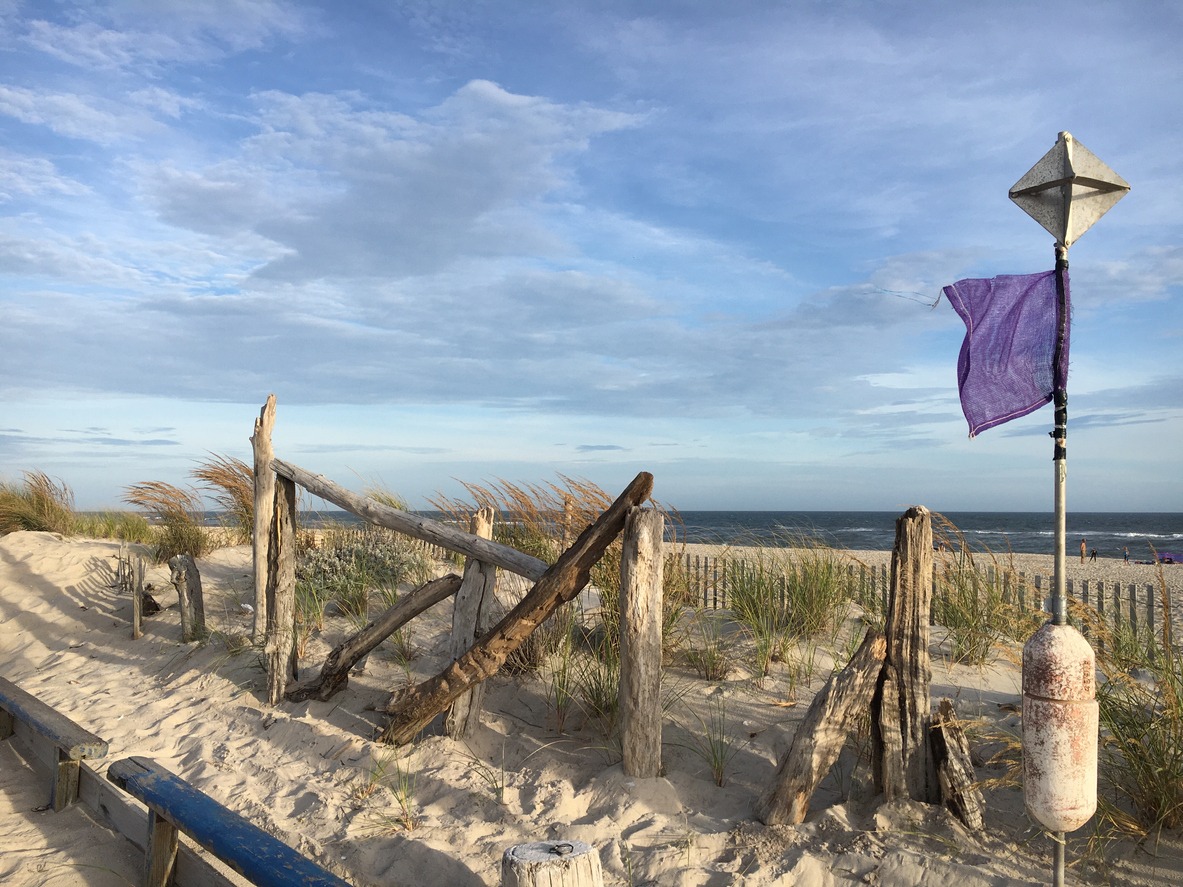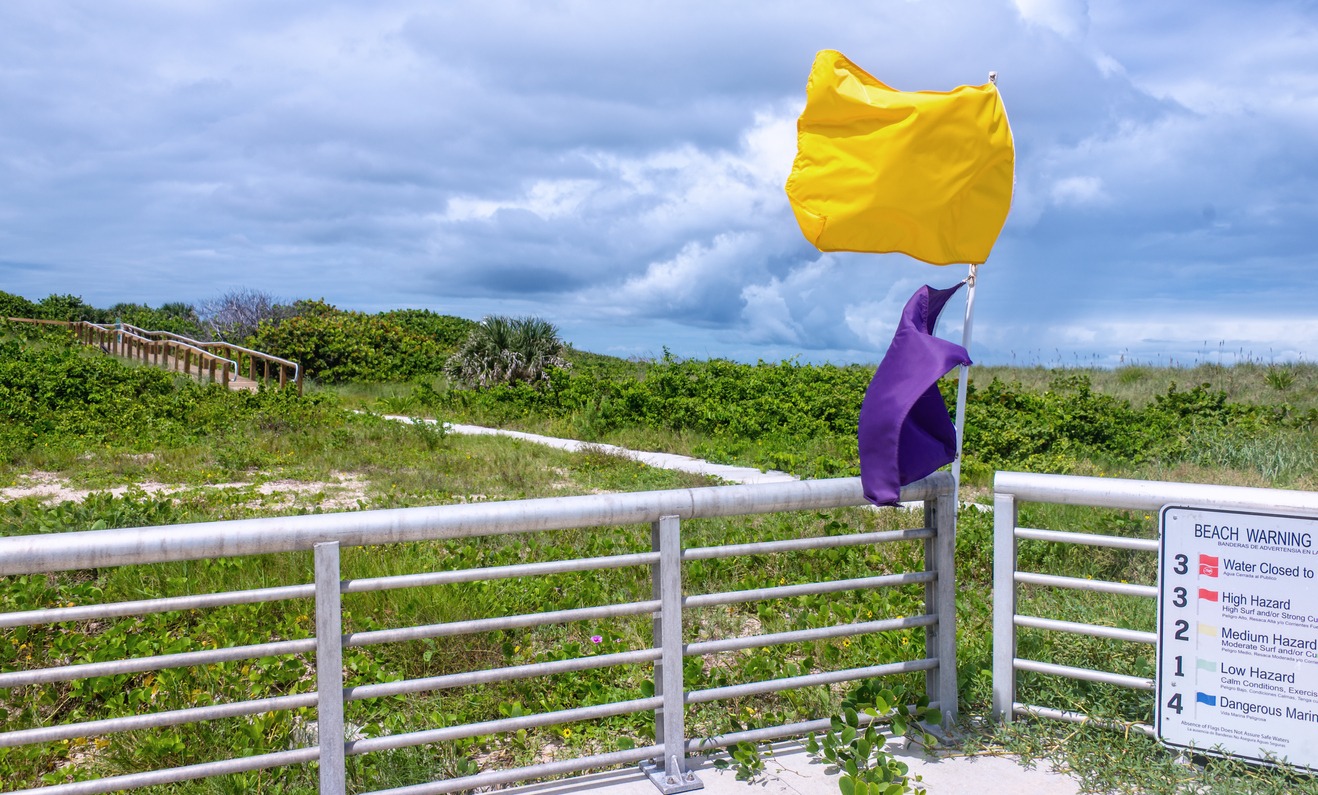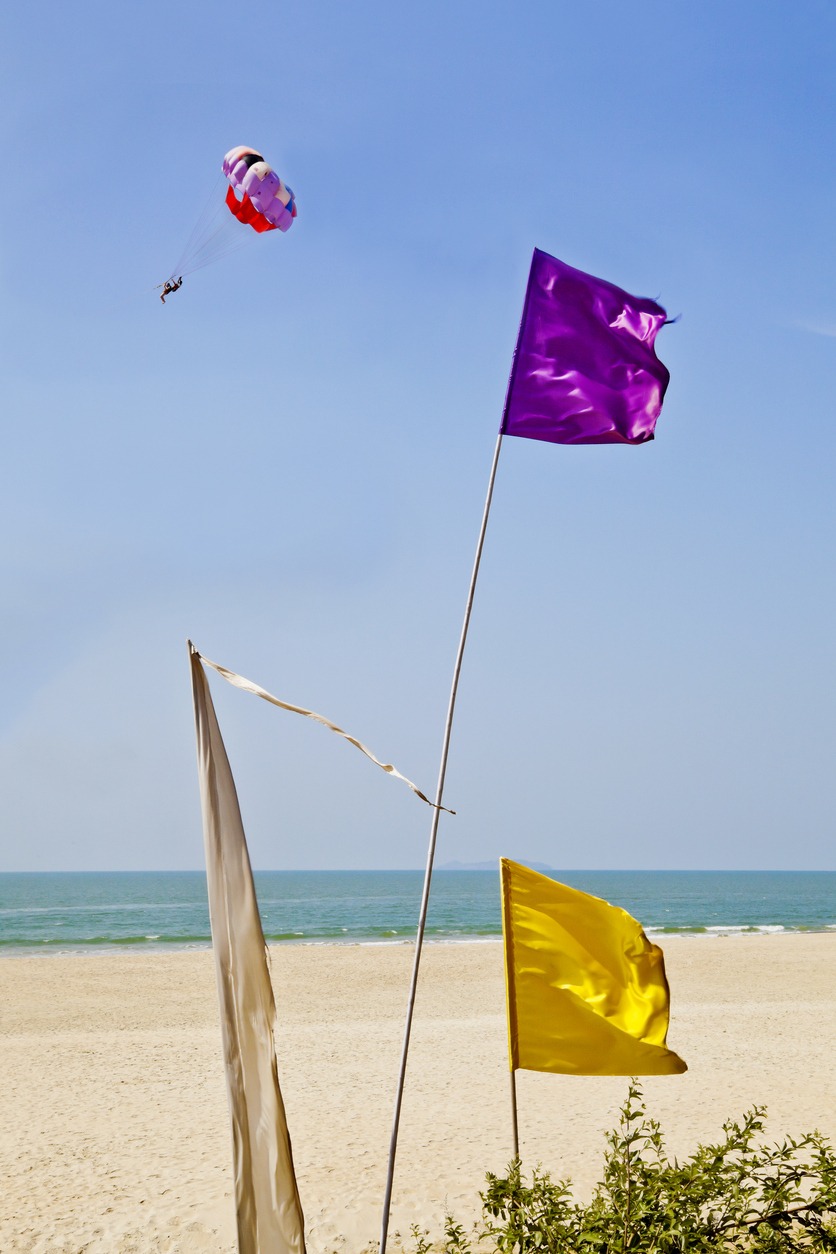Flags at the beach are often found outside near the surf and lifeguard towers. You’ve surely noticed them while enjoying a day at the beach. They have red, yellow, green, and, last but not least, purple. But what do these beach warning flags mean?
This guide will look at what purple flags at the beach mean and the different types of beach warning flags. Before going to the beach, it’s critical to understand the different types of flags. Knowing these will help you stay safe in the surf and plan accordingly.
The International Life Saving Federation and the United States Lifesaving Association require beach safety flags. Fortunately, it’s quite standardized, with only a few flags!
Let’s start with what the purple flag represents, then move on to the different types of flags.
What Does a Purple Flag on the Beach Indicate?
You may have never heard of a purple flag. So for your information, this flag indicates the presence of marine pests.
But what exactly is a marine pest? A marine pest could be any one of some things. Jellyfish, algae, and even sharks are a few examples.
Anything in the ocean that is dangerous to humans is considered dangerous marine life. Sharks are, of course, the first thought that springs to mind. However, this is not always the case.
When some beaches display purple flags, it is most likely due to jellyfish. If sharks are detected in the area and considered a danger to beachgoers, the area will be closed off with double red flags.
You’re responsible for your safety when swimming with purple flags present. If you see a purple flag, there might be very threatening jellyfish in the water. We recommend speaking with your lifeguard before entering the water, as the kind of marine pest could range from bioluminescent algae to a Box Jellyfish.
It’s better to avoid the water when you see purple flags flying. You can still go to the beach and play on the sand. If you must go into the water, keep a close eye on your surroundings and have stock on hand to handle jellyfish stings.
Again, we strongly advise against entering purple flag conditions. The sting of a dangerous jellyfish can be fatal. However, when a jellyfish sting occurs, the hereunder are the best treatment options:
- Don’t rub it and use salt water to remove any tentacles. The stinging will be exacerbated by drinking fresh water.
- Inactivate the stinging cells by applying isopropyl alcohol or vinegar to the affected area.
- Anyone who has been stung should be surveilled for any adverse reactions. Seek medical attention if stings cover a large portion of your body.
- A paste made from a meat tenderizer is said to help relieve pain.
The Purple Flag of Block Island
Purple flags on Block Island are not the same as standard purple flags. When the purple flag is flying, it can mean one of three things: your trip to or from the island has been postponed, you are unlikely to be affected because you were planning on staying put, or you get the day off because this declaration has affected your job.
Purple flag days are a Block Island tradition. When the American flag is overtaken by a solid purple flag on the flagpole in the center of Old Harbor, it indicates that the winds are so strong that the boats are unable to operate. It also implies that everyone is staying and no one is leaving, at least not by ferry.
Locals refer to it as a “shore day.” And, because the weather is usually a mess, a shore day is a great time to hit the pubs for a cold one.
The feeling of being alone can be exhilarating. It isn’t a sense of isolation at all. It gives the impression that everybody’s all in this together and must make the best of our situation; it revitalizes a sense of community.
It has a faint resemblance to what it might have been like in the initial days of boat travel when getting to the mainland was a much riskier and infrequent experience. It reinvigorates the sense that Block Island is truly unique.
Suppose there are several purple flag days in a row (rare, but it does happen). In that case, the boats that run on the first day of service are packed with tired travelers who were unexpectedly stranded on the mainland, many of whom had to find accommodation and were eager to get back home.
Other Types of Beach Warning Flags
Red Flags
The most pressing of all beach warning flags, red flags warn swimmers of grave water risks. A single red flag indicates that there are dangerous currents, the surf is rough, or both. If you see a red flag, you must proceed with extreme caution and only swim if you are a strong swimmer.
On the other hand, two red flags indicate that the water is closed to swimming because the conditions are too risky for even the strongest swimmers. Some communities use red flags with a swimmer symbol with a white line to indicate that swimming is prohibited.
Yellow Flags
When the seas are rough but not dangerous, you might find a yellow flag on the beach. This colored flag indicates high surf and potentially dangerous undertows and currents and warns swimmers to use extreme caution. Swim only close to lifeguards and obey all lifeguard warnings if there is a yellow flag.
Wear your life jacket when swimming during yellow-flag days if you aren’t a strong swimmer or swimming with children. Some beaches have permanent yellow flags because of a sudden drop-off, rocks, or a large population of baitfish that draws predators.
Green Flags
The ocean has always been unpredictable, and hazards exist even on calm and clear days. There are times when the risk of danger is lower than on others.
A green flag is an all-clear sign that the water is safe to swim in. But even though the flag is green, use caution in the water, keep an eye on children and heed lifeguard warnings.
Yellow Flag With Black Ball
Normally, a yellow flag with a black ball will be placed between surfing and swimming zones. This flag also implies that only soft surfboards are permitted to be used (such as no fiberglass surfboards). Inquire with a lifeguard or check the signs for the appropriate zone for your activity.
Regional Distinctions
Some beaches employ flags specific to that beach or are related to popular activities there. If you see a flag on the beach and are unsure of it, ask a lifeguard or search for an indicator key in a public area or near the beach entrance.
Are you heading to the beach soon? Check out these beach safety tips for a safe and fun time at the beach!



